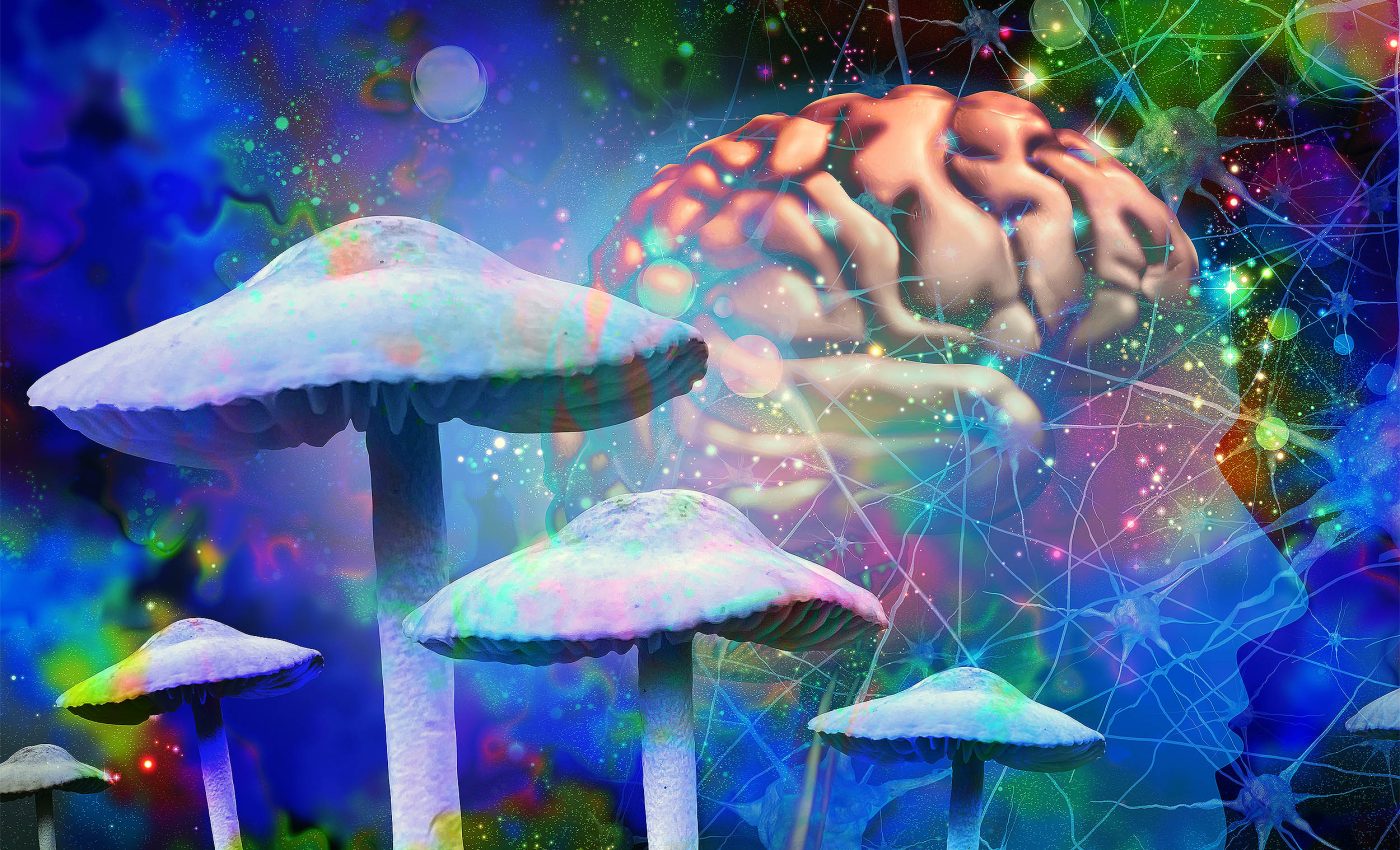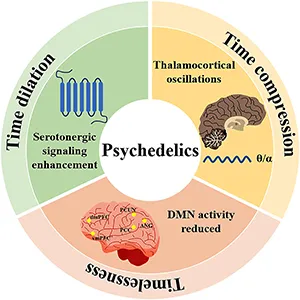
Psychedelics reshape the perception of time, unlocking therapeutic avenues
Our brains are timekeepers – not just ticking like wall clocks, but governing how we experience life itself. Every memory, plan, and emotion is measured and understood through the lens of time.
But what if the brain’s own internal clock became muddled? That’s precisely what psychedelics do, and researchers believe this bizarre distortion of time could help them better understand – and even treat – mental illness.
Psychedelics such as LSD, psilocybin (the active ingredient in magic mushrooms), and DMT do something strange to the way the brain experiences time. Users commonly report that minutes feel like hours.
Or the opposite – hours go by in what feels like seconds. Others report that time simply vanishes. Past and future become indistinguishable from the present.
These are not just wild trip tales. Scientists view these effects as a window into how the brain creates reality – and how they might repair it.
Psychedelics vs. brain’s time keeper
When you are not concentrating on anything in particular, the brain remains active through a system called the default mode network (DMN).
This network deals with self-reflection, daydreaming, and all that mental chattering we are so familiar with. It even lets us perceive time in constant, smooth manner.
Under the influence of psychedelics, the DMN quiets down. That quiet is linked to reports of time dissolving.
This shift could be key to understanding both the brain and some mental health problems, according to a study led by Professor Xiaohui Wang from the Chinese Academy of Sciences.
Chemistry and the illusion of time
It’s not just one part of the brain at work. The basal ganglia, structures that track tiny time intervals in the range of milliseconds, change their behavior too.
The prefrontal cortex – important for planning and tracking longer time spans – starts communicating differently. Even the cerebellum, known for motor timing, and the insula, which connects our body’s state to time, show altered activity.
These brain changes are powered by chemistry. Serotonin, especially through a receptor called 5-HT2A, plays a central role.
Activating this receptor increases brain sensitivity to incoming information, which might explain why time seems to stretch. Dopamine and glutamate are involved too, especially in shorter time scales and processing complexity.

How psychedelics distort time
The article breaks time distortion into three main categories. Time dilation is when moments feel stretched.
A five-minute song might feel like an hour-long journey. This could happen because the brain is processing more sensory information, more deeply, more vividly.
Then, there’s time compression. Hours vanish. You’re so locked into the experience that you hardly notice time passing.
That could be tied to ego dissolution – when your sense of self temporarily disappears, and so does the usual way you track time.
And finally, there’s timelessness. This is the most intense form. People say the past, present, and future seem to merge. They stop feeling separate.
Timelessness usually shows up in what users describe as mystical experiences. The DMN goes quiet, and the experience becomes less about a timeline and more about being.
Different substances can produce different effects. Psilocybin tends to bring on timelessness. LSD often causes strong time dilation.
That tells scientists these drugs interact with the brain in different ways – and might be useful for different kinds of therapy.
Psychedelics and emotional clocks
Some mental illnesses include a disrupted sense of time. People with PTSD are stuck in the past. Those with anxiety are often stuck worrying about tomorrow. Depression has each day feeling like the same burdensome moment, stuck in a loop.
The authors highlight that psychedelics might offer a way out. In clinical studies, patients given psychedelics often say they experienced memories differently. Time felt less linear.
That shift let them face painful memories with less fear, and sometimes with more understanding. Patients describe these temporal shifts as significant factors in symptom improvement.
“Psychedelics may effectively rewire neural circuits involved in both time processing and emotion regulation,” said Wang.
By interrupting unhealthy patterns – where someone’s mind is always in the past or future—psychedelics could help build a healthier sense of time and self.
This could be especially important for people who don’t respond to traditional treatments. If someone feels emotionally stuck, it might be because they’re also stuck in time – and psychedelics might shake that loose.
Time trips need supervision
The researchers are clear: this isn’t something people should try at home. Psychedelic experiences can be intense. Without the right setting and support, time distortions could be confusing or even scary.
The experts stress that therapy with these substances should only happen under careful supervision. That means medical professionals, controlled environments, and strong ethical guidelines.
“Robust informed consent processes must ensure patients understand potential for profound consciousness alterations, including potentially distressing temporal distortions,” noted the researchers.
Future research directions
Scientists need to do more research to find out how long these time perception changes last and whether they directly cause healing or simply accompany it.
Long-term studies could help connect the dots between brain activity, time distortion, psychedelics, and improved mental health.
There’s also the issue of legality. The U.S. classifies many psychedelics as Schedule I drugs, limiting how much research scientists can do.
The authors call for better rules and clear safety protocols so these therapies can be studied responsibly.
Time, psychedelics, and mental health
The article points out big questions researchers still need to answer. Why do various psychedelics alter time in different ways?
Which brain rhythms are associated with typical time perception – and how do psychedelics disrupt those rhythms? Might the distortion effects of time be able to predict who benefits most from such therapies?
The solutions may change the way we treat mental illness. Currently, most therapy is aimed at thoughts and feelings.
But time – the way we experience it and live in it – may be equally significant. If we can make sense of and manipulate how time operates in the brain, we may find new methods of healing.
The full study was published in the journal Psychedelics.
—–
Like what you read? Subscribe to our newsletter for engaging articles, exclusive content, and the latest updates.
Check us out on EarthSnap, a free app brought to you by Eric Ralls and Earth.com.
—–













